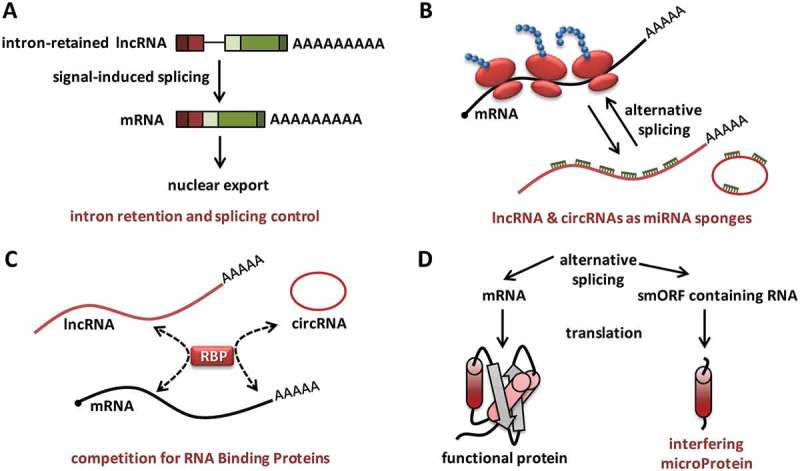Figure 2.

Roles of ``non-coding‘‘ variants arising from protein-coding genes. (a). Intron retention could lead to the generation of nuclear lncRNA intermediates which can undergo signal-induced posttranscriptional splicing to translatable mRNAs, which are then exported from the nucleus. (b). Some lncRNA transcript variants and circRNAs function as miRNA sponges, facilitating efficient translation of mRNAs. (c) lncRNAs and circRNAs compete with mRNAs for binding to regulatory RNA-binding proteins (RBPs), sequester RBPs and alter the translation and stability of mRNAs. (d). mRNAs and smORF-containing transcript variants could encode full-length proteins and truncated micropeptides respectively. Some micropeptides could function as miPs (microProteins) and interfere with full length protein function, owing to their common origins and sequence identity.
